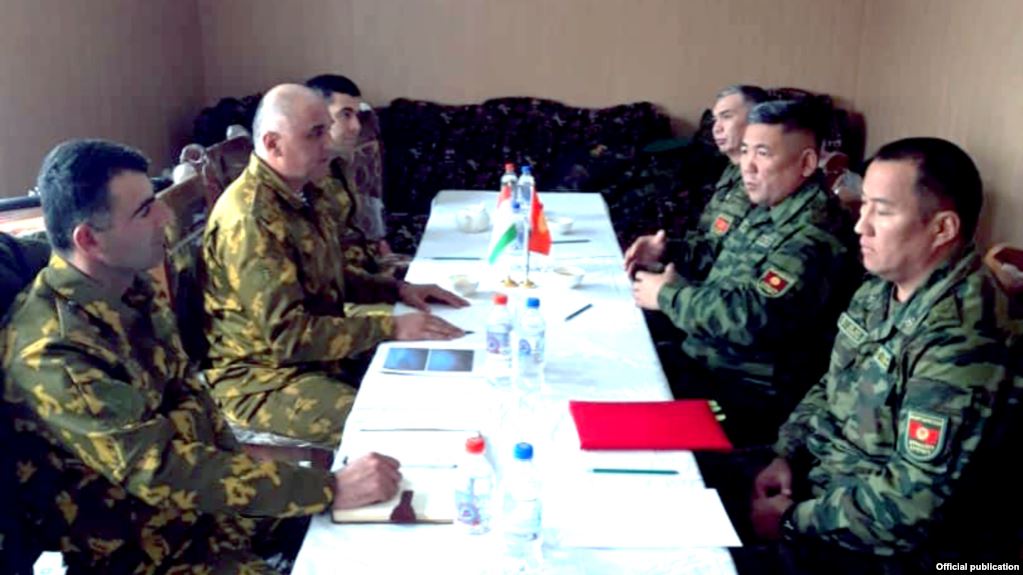Kyrgyz and Tajik Officials Agree to Territory Exchange Following Border Clashes
Recent Articles
Author: Nicole Wolkov
01/30/2020
Kyrgyzstan’s border province of Batken, Kyrgyz and Tajik officials have agreed to begin the process of a land exchange along a disputed area of the border. Negotiations led by Kyrgyz Deputy Prime Minister Jenish Razakov and Tajik Deputy Prime Minister Azim Ibrohim took place near the Kyzyl-Bel and Guliston Kyrgyz-Tajik border checkpoints and ended midnight on January 14. Both sides signed a protocol stating that a joint topographic working group will agree on a line of demarcation along the 114 kilometer (71 mile) stretch of border by February 15. By March 1, both sides aim to exchange equal territories between Batken and Isfara regions. Both countries will continue to patrol jointly along Chorku-Ak-Sai-Vorukh and Kok-Tash-Ortoboz roads and will establish traffic lights and cameras at the intersection of Isfara-Vorukh and Batken-Isfana roads.
The most recent clash began on January 10, when the Kyrgyz Border Guard Service reported that gunshots were fired from the Tajik side, while the Tajik Border Guard Service stated that Kyrgyz residents in the border town of Kok-Tash incited violence. Over 10 clashes between Kyrgyz and Tajik residents along this area of border have erupted in the past year, usually stemming from conflicts over land and resource sharing. In December, three Tajik nationals and six Kyrgyz nationals - including border guards and a local lawmaker - were wounded, and in September, clashes resulted in four deaths. In March, conflict broke out over construction of the Aksai-Tamdyk road diversion through which Kyrgyzstan intends to connect remote Kyrgyz villages with Batken by bypassing the Tajik enclave of Vorukh. Tajikistan worries that Vorkukh could be isolated from transport. Despite efforts in 2016 to delineate borders between Kyrgyzstan and Tajikistan, 451 kilometers (208 miles) of the 971 kilometer (603 mile) border have remained undelineated since the collapse of the Soviet Union in 1991, making the region a continuing flashpoint for border skirmishes.
Comment. Kyrgyz and Tajik officials routinely hold talks after border conflicts about border demarcation. However, as conflicts continue to occur, negotiations fail to resolve the underlying tension in the region. While borders should be delineated after 30 years of disputes, residents begin conflict mainly due to transportation, land, or resource issues. Residents should enjoy security and effective transportation; therefore, agreements between the Kyrgyz and Tajik national governments establishing borders and building checkpoints cannot singlehandedly solve the conflict. Increasing border checkpoints and a military presence in the region only creates more tension as residents on both sides feel a lack of security. An armed presence creates an environment of hostility, thus making residents feel threatened and pushing them to violent clashes. Instead, local authorities, such as transportation and natural-resource experts, should be consulted to address the needs of the residents when looking for a path to peace. A joint Kyrgyz-Tajik committee at both the local and national level should be established to address future skirmishes and investigate offenses on the border. Each side needs to make concessions and take an integrated approach by working with local authorities in order to resolve the border conflicts.

Tajik troops patrol the outer limits of the Vorukh enclave. Photo courtesy of RFE/RL Tajik Service.

Kyrgyz and Tajik border-security representatives meeting at the border. December 19, 2019. Courtesy of RFE/RL’s Kyrgyz Service.